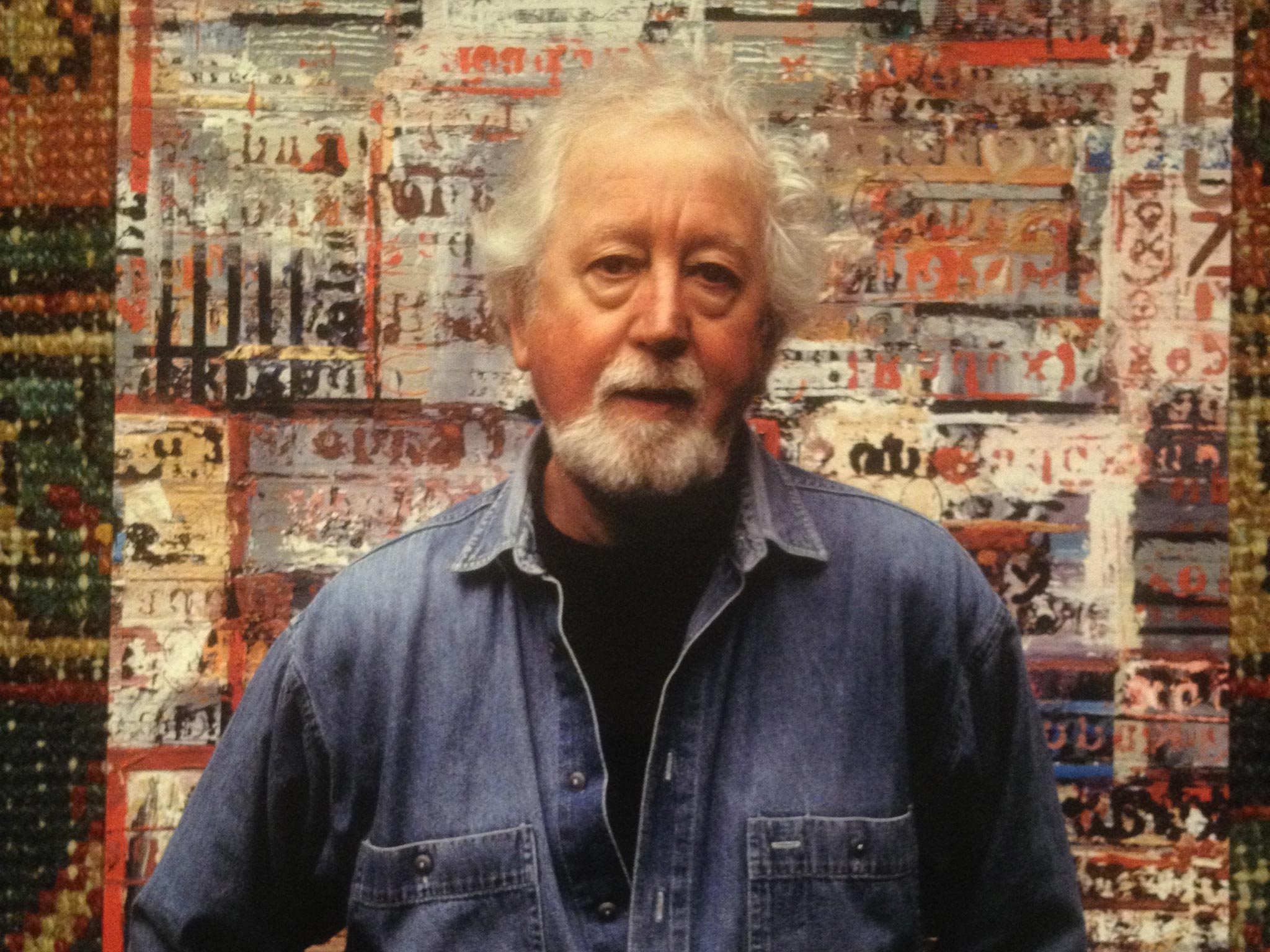John Uzzell Edwards: Artist whose fascination with the Welsh industrial landscape gave way to the "pure painting" approach

The painter John Uzzell Edwards claimed to have trained as an artist by avoiding art schools. He took what he could from the artists he admired and taught himself the rudiments of painting by copying scenes he had seen only on postcards and in books borrowed from the school library. He had a natural talent as a draughtsman and began by drawing rows of terraced houses, derelict buildings, dilapidated pits and abandoned chapels, of which there is no dearth in upland Glamorgan.
When I first met him, in 1962, I was living in Merthyr Tydfil and he was in Deri, a former mining village near Bargoed, just over the mountain, where he had been born. I had discovered he kept a work-room (studio was too grand a word for it) not far from where I lived. Our friendship was sealed after I bought for the then not inconsiderable sum of five guineas an ink-and-wash drawing of a pit-head meticulously observed and executed with a confidence that makes it one of the most striking images of the South Wales coalfield hanging on my walls to this day. It was John's first sale and he never let me forget I had been his first patron.
After leaving Bargoed Grammar School, he had a number of manual jobs before being made redundant in 1956; even the mine where his father had been employed, and where he too would have had to work, had been closed down. But the demise of the coal industry was for him a first opportunity to pursue his dream of becoming an artist which he had kept from his teachers and family alike; that was why he painted in the back-streets of Merthyr, where his mother wasn't likely to venture, and not Deri. With money he had saved, and still only 19, he took himself off to Paris and thence to Switzerland where he saw "real" paintings for the first time.
The autodidact never missed a chance to educate himself thereafter. In 1966 a chance encounter with a holidaying professor on the beach at Tenby in Pembrokeshire, where he had built a small shelter for himself with the help of fishermen, led to his being awarded a Granada Arts Fellowship at York University. On the last day of his tenure there he met Mary Whitfield , the woman who was to become his wife. They had a son, Charlie, now better known as the graffiti artist and gallery-owner who goes by the name of Pure Evil, and a daughter, Esther. John and Mary made their last home in Plas Coedffaldau, a former mine-owner's mansion in the upper reaches of the Swansea Valley, which he used as a studio and exhibition space.
His standing as a painter of repute was confirmed by his receiving a Leverhulme European Research Award, which enabled him to spend a year in Rome. In 1986 he was Artist in Residence at the Glynn Vivian Gallery in Swansea and he put on one-man exhibitions at the Humphries Gallery in San Francisco (1999), Tenby Museum (2000), the Mall Gallery in London (2001), the National Museum and Galleries of Wales (2003), and the Museum of Modern Art in Machynlleth; he exhibited in three consecutive years at the Euro-Celtic exhibition in Lorient, Brittany. In 1996 he was commissioned by the Shakespeare Institute to paint any character from the plays and, ever the Welsh patriot, chose Owain Glyndwr.
Uzzell Edwards, after his initial fascination with the industrial landscape of South Wales, produced work which had to do with what he called "pure painting", not picture making, and was driven by an exploration of Celtic forms and patterns such as he had seen in 1988 while travelling in Europe. He was also inspired by Celtic crosses, medieval tiles and panelling, Pictish knotwork, illuminated manuscripts and church wood-carvings. He was particularly drawn to the eighth-century St Teilo's Bible which, as he often pointed out, had been made in Wales at roughly the same time as the Lindisfarne Gospels and before the Book of Kells.
More recently he made large mixed-media canvases inspired by, but not slavishly imitating, the patchwork patterns of bed-quilts, the making of which is something of a folk art in Wales. They have non-figurative outlines and vigorous textures created by layers of oil paint, applied with brush and palette knife. The exhibition of these huge paintings at the National Waterfront Museum in Swansea in 2011 and as part of a retrospective at St David's Hall in Cardiff in 2013 met with wide acclaim.
John was obsessive about his painting and if there was work in progress, as there usually was, would speak about it unprompted and at great length. A gentle man, he had a slight speech impediment which, I think, was the reason why he hadn't done well at school but which kindled in him a burning desire to express himself as a painter. It endeared him to his many friends and turned out to be the making of him as an artist.
MEIC STEPHENS
John Uzzell Edwards, painter: born Deri, Glamorgan 10 October 1934; married Mary Whitfield (one son, one daughter); died 5 March 2014.
Subscribe to Independent Premium to bookmark this article
Want to bookmark your favourite articles and stories to read or reference later? Start your Independent Premium subscription today.

Join our commenting forum
Join thought-provoking conversations, follow other Independent readers and see their replies